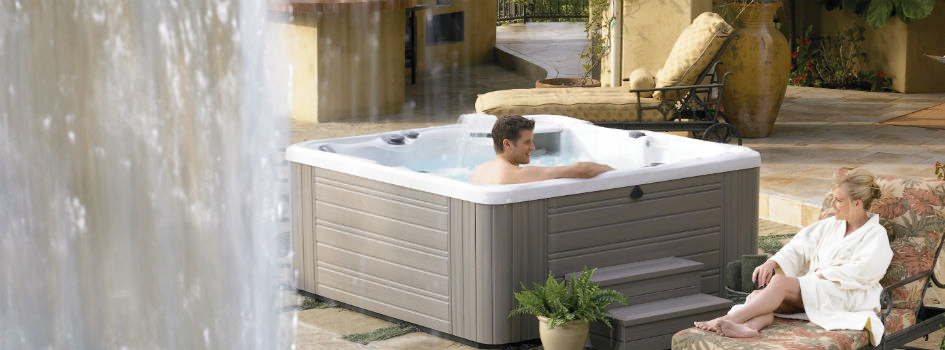
20 minutes in a Caldera Spa has health benefits. Relax, unwind, and melt the day away.

20 minutes in a Caldera Spa has health benefits. Relax, unwind, and melt the day away.
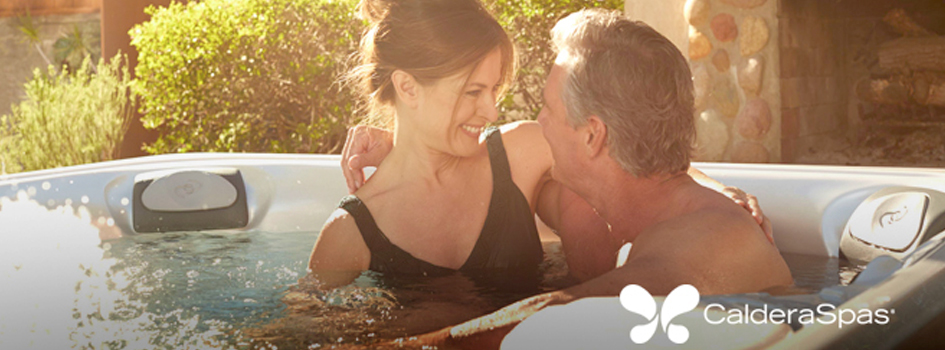
Where to put a hot tub? How does the hot tub work? Do I need an attachment for the hot tub?
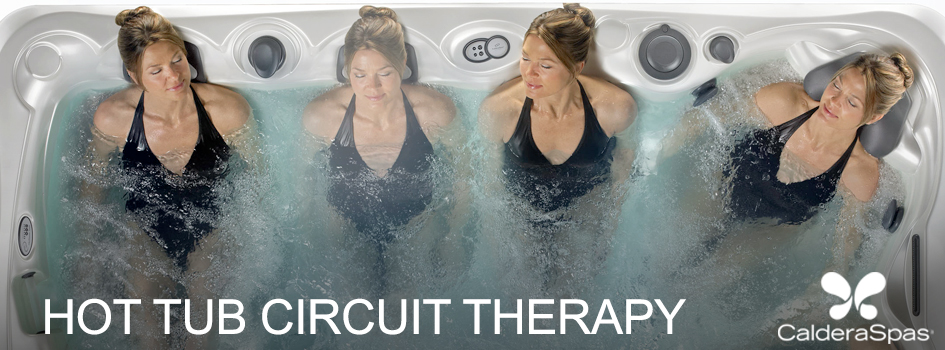
Caldera Spas can help with hot tub circuit therapy. What is hot tub circuit therapy? look at Caldera Spas hot tub to learn more.
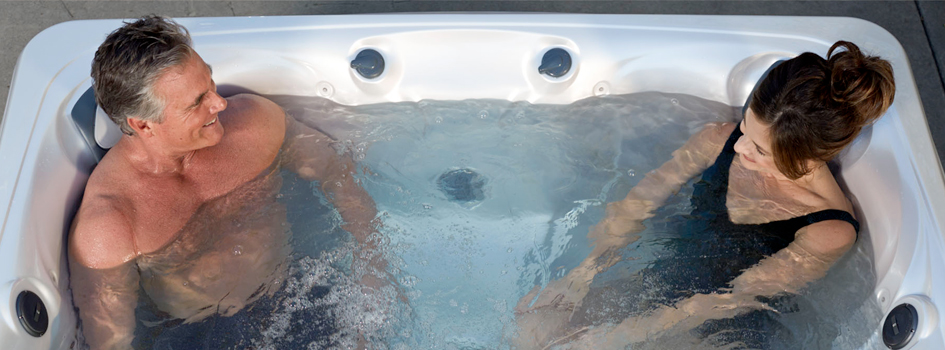
how hot tubs can help promote healthy living. How a hot tub can promote relaxing.
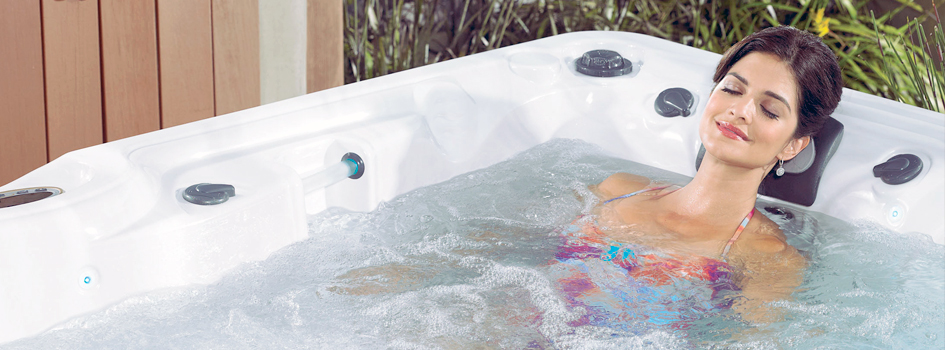
A hot tub can enhance your fitness routine.
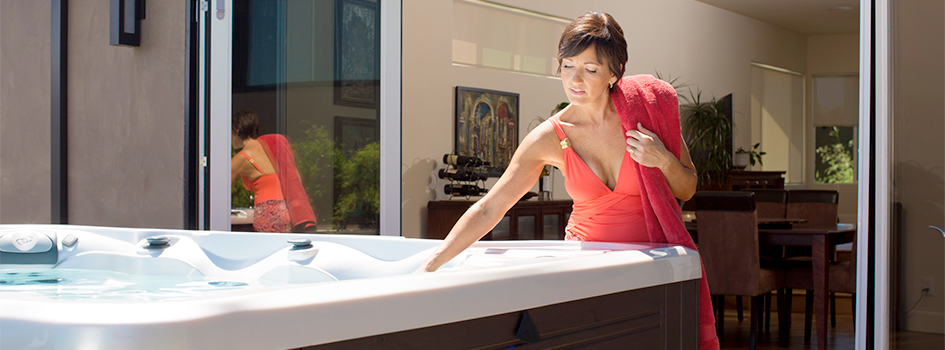
The water in your hot tub can be recycled for use around your home, decreasing the amount of fresh water you need.
Here are answers to some common questions when it comes to recycling spa water:
No. Spa water is classified as “gray water,” similar to water from baths, showers and bathroom sinks.
Using gray water serves two purposes:
Some hot tub brands use salt water systems that may damage lawns or shrubs, so it’s not recommended for use on plants.
Most sources recommend waiting for three days after chemicals were last added to your hot tub, turning off the spa and allowing the water to cool. Chlorine should dissipate quickly, especially if you leave the cover off. After three days, test the water to make sure that the chlorine level is at zero. The pH should be between 7 and 8 to be safe for plants.
Most portable hot tubs drain by gravity from a valve at the bottom of the spa that can connect to a garden hose. Using the hose, you can apply the water where it’s needed. However, it only works if you’re level with the hot tub or downhill from it. You can always collect water to be recycled in buckets that are easily moved to areas of use.
You can also purchase an inexpensive submersible pump for $50 to $100 (make sure it connects to a garden hose where the water comes out or has an adapter). With it, you can pump water into storage barrels or apply it directly to the task at hand.
Recycled hot tub water can be used in a variety of creative ways, such as…
We do not recommend using your old spa water on your vegetable garden.
Potentially, yes. All recycled water uses are ultimately governed by local jurisdictions, and those take precedence over any of the above suggestions.
After using your spa’s water for months to treat tired muscles, relieve pain and help you rejuvenate, you can potentially get even more use from that water. And that makes your hot tub one the most efficient water users in your home.
WHAT DO YOU THINK?
As we learn more and more about water conservation efforts, we’d like to hear how you’re taking action. Are you already conserving or recycling water in your home? Would you make the effort to use recycled hot tub water for decorative plants that aren’t getting enough moisture?
We’re also very interested in what other uses you can think of for your recycled spa water. Please leave us a comment so others can take advantage of your ideas. Thank you!
Interested in pricing information? Click here!
Would you like to download a free Caldera brochure? Click here!
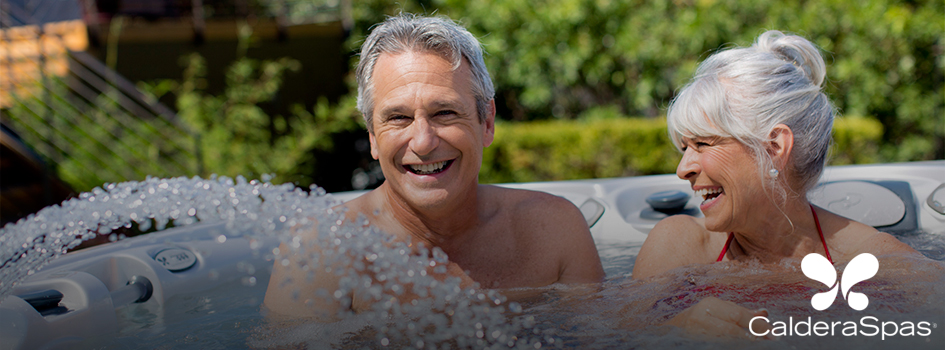
If your dealer offers a test soak, take advantage of it. It’s a great way to understand what you’re buying and to compare models you’re considering.
Of course, there are many factors to consider when learning about hot tub options, including brand reputation, quality, energy efficiency, customer service, warranty and projected daily operating costs. However, some impressions are best realized through experience.
Sure, enjoy the sensation and see how it feels to relax deeply. But you’re here to learn far more than that.
Here’s what to look for as you test a hot tub:
Caldera Spas dealers nationwide will help you at every stage of the shopping and preparation process. To find a Caldera Spas hot tub dealer visit http://www.calderaspas.com/shopping-tools/find-dealer. Once you’ve found one near you, don’t forget the test soak.
We’ve outlined some reasons taking a test soak is a great idea. So would you? How comfortable are you testing out a hot tub in a dealer’s showroom? Would you prefer to take the soak with someone, and if so, who? A family member? A friend? And when you take a soak, which features are the most important to you?
We’d love to hear what you think, so please leave a comment and tell us how you might approach a test soak. Thank you!
Interested in pricing information? Click here!
Would you like to download a free Caldera brochure? Click here!

And while taking some time for ourselves can be a challenge, it doesn’t have to become an afterthought. Activities like exercise, meditation and personal reflection may very well be the missing ingredient to jump-starting productivity and regaining a positive outlook on our day-to-day lives.
The next time your schedule has you feeling out-of-sorts or maybe just a little overwhelmed, remember to carve out some time for you. Try challenging yourself to one of the activities below – they’re only 20-minutes and the benefits will truly start to add up. These quick breaks are perfect for weaving into a busy schedule and will leave you feeling refreshed and ready to tackle whatever life has in store. Give it a try. Whether you make time for one or time for four, the important thing is you’re taking control by making time for what’s important. You.
Here are a few ideas to start with, but remember to choose what makes you feel the best.
Give your body the renewal it craves.
http://www.calderaspas.com/health-wellness/power-warm-water
Get out there and soak in the sun.
http://www.webmd.com/depression/guide/exercise-depression
http://www.medicalnewstoday.com/articles/161618.php
Find a little inner peace.
http://www.calderaspas.com/health-wellness/20-minute-renewal/need-relax-take-deep-breath-or-several
http://www.healthandyoga.com/html/meditation/objectives.aspx
http://www.project-meditation.org/a_wim1/statistics_on_people_who_meditate.html
http://blog.bufferapp.com/how-meditation-affects-your-brain
Get in shape and loosen up those muscles.
http://blogs.yogajournal.com/goodlife/archives/2011/07/5-surprising-benefits-of-yoga.html
http://www.self.com/body/fitness/2012/03/benefits-of-yoga-slideshow/7
Sharpen your mind with brain-teasers and logic puzzles.
http://www.huffingtonpost.com/2013/09/16/improve-memory-tricks_n_3922173.html
http://www.savingadvice.com/articles/2012/05/02/1010311_11-reasons-to-do-jigsaw-puzzle.html
Write a story, poem, or journal entry about your day.
http://lifehacker.com/why-you-should-keep-a-journal-and-how-to-start-yours-1547057185
http://www.rd.com/health/wellness/reduce-stress-through-journaling/
http://apt.rcpsych.org/content/11/5/338.full
Share these wellness challenges with your friends and family – just use the sharing icons below. What challenges will you take on? Tell us in the comments below.

With Facebook and Twitter, we can stay connected all day, every day. In fact, you’ll learn what people are having for breakfast, where they’re “checking in” and see adorable photos of their pets drinking from the toilet. And after a while, a gnawing realization begins to sink in.
Having information about someone is NOT the same as being connected to them. Getting together and looking in someone’s face for even a few minutes trumps months of social media. That’s not to say social media is bad. But it should be put aside for the real thing now and then.
Toyota did an ad for its Venza a while back that is the prefect embodiment of that idea. A young woman complains that her parents only have 19 friends on Facebook, while she has 687. As she sits alone in front of her laptop, she says in a monotone voice, “This is living.” Meanwhile, the ad cuts to scenes of her parents mountain biking with just a few of their living, breathing friends.
If you really want to stay connected, realize that it takes some time and effort. After all, this person is your friend, right? Remember, a Facebook “friend” is not the same as a friend.
Here are a couple ideas, most of which used to be painfully obvious.
Pick up the phone and call when you have time and when you’re not on the run. Don’t try to catch up while you’re driving the kids to soccer (for everyone’s benefit). Do it when you can concentrate only on that conversation. Speak with and listen to and honest-to-goodness human voice.
Not a wall posting. Not a tweet. Not an email. While an old-school email is better than the first two, why not go older school? When’s the last time you got a letter in the mail? These days, it can be an amazing personal gesture.
Or at the very least, keep birthdays on your electronic calendar and have it alert you several days ahead of time. Send a printed birthday card with a handwritten note. A small, inexpensive gift is also a good way to let someone know they’re important to you. Compare that to posting “Happy BD!” on their wall with the other 686 friends.
Yes it takes time, and yes, you have to fit it into your schedule, and yes, it’s hard to find that time to fit it into your schedule. THAT’S THE POINT!
It’s a fantastic way to break through the ice formed over many years. But aren’t you disappointed when you receive the auto-invite from them? Personally, I find it insulting, lazy and insincere. Really, how genuine can you possibly be when you push a button that immediately produces the line “.… I’d like to add you to my professional network on LinkedIn.” Oh, please. Yes, you can write your own personal invitation, and no, it’s not difficult to figure out how. After you’ve connected, take the opportunity to continue communicating.
Or as Betty used to say, “Bake Someone Happy.” Four cupcakes and a note left on the front porch can make someone’s day. Put the treat in a container to keep from feeding the neighbor’s cat. You’ll have to get your container back later. By the way, that’s a positive, not a negative.
Sure, you already have people over for dinner, so mix it up a bit. Why not a few friends for a laid-back, participatory dinner. A taco bar, for example. Or hoagie bar or a pizza bar (personal pizzas made on the grill). Open cold beverages and get caught up. No sweat.
Invite a friend over for a movie. If you can borrow a digital projector from work and show a movie on the wall, that can make the event feel unique.
If you live near your friend (which certainly doesn’t imply staying connected any more), go for a walk. You’ll get some exercise while you get caught up.
Once you get rolling, you’ll have your own ideas. Still, the essential point is to show you’ve taken the effort to connect, one friend to one friend. Whether it’s through a gesture or a personal get-together, you’ll have broken through and re-energized a friendship and reminded one another why you became friends in the first place.
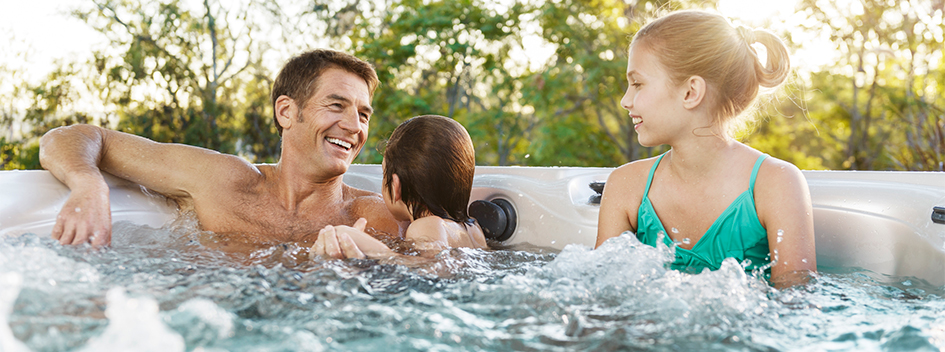
Or at least it is for me. Anyone else? Various studies (a few which are outlined in this Forbes article) describe how being constantly “plugged in” takes a toll on us physically, emotionally, and relationally, which can make it hard to connect in person, even with those living in the same house!
One way to recharge relations is spending quality time together in a spa. Caldera spa owners have shared that their hot tub inevitability becomes a family gathering place and conduit for conversation. Sans devices, the warm water becomes a safe haven for honesty and bonding. Caldera owners can hardly believe the positive effects a hot tub naturally has in bringing their own families together (see below).
“Another great benefit was getting the family unplugged and all together, just to talk and hear about their day as we soak in the spa. Every family needs some time like that and this product helped bring us together.”
– JM13 from New Hampshire
“This was a great choice for my family of 5. We use it 3-4 days a week. Gives us time to have family time.”
-Fdkfenn from Connecticut
Once a routine focused around meeting in your hot tub is established, conversation will spark naturally. To maximize the time together as a couple or a family, we’ve listed a few of our favorite communication tools from various experts.
As an evening ritual, gather everyone in the hot tub, and ask them to share the highlight of their day, as well as a low point or challenge. Then, invite each family member to share if they need help accomplishing a goal. This could be anything from making lunches for the next day, to picking up supplies for a science project, or reading a bedtime story. Communication rituals that focus on each member of the family cultivate connection and bring everyone closer together, according to Barbara Fiese, PhD., Chair of Psychology Department at the University of Syracuse.
Instead of just asking questions about school, friends or events, ask how that experience made them feel. Kids want to feel that their voices, opinions and feelings matter. By asking “how did you feel about that” you will likely get the answer you are really interested in, and your children will share more than you ever expected.
Hot tub time is an opportunity to model appropriate behavior when it comes to having a different opinion. When disagreements arise, institute a rule that responses must be communicated in the following way: “While I respect your opinion that [summarize the opposing view], in my experience [communicate perspective].” Sara Gable, a specialist in Human Development indicates that maintaining this respect, will allow you to also maintain your relationship with your child, especially through their teenage years.
Remember being a teenager and ranting about your parents not listening or understanding your viewpoints? The one and only perspective that mattered was yours. Although your role in the situation has changed now, your teenager’s need to be heard has not. Instead of interrupting with your opinions, answers or solutions, listen. Family counselor, Carol Maxym, PhD, recommends a “50{d08558500d8945c62f975d7fb1313ca24132852f79c1e304564c6cb4e5b45d98} rule” where parents limit what they would normally say by 50{d08558500d8945c62f975d7fb1313ca24132852f79c1e304564c6cb4e5b45d98}. By focusing on listening to how a child describes their day and their feelings, you have the opportunity to better acknowledge their experience.
With these tips in mind, implement a schedule and aim for at least a few 20-minute sessions in the hot tub with your family each week with no technology. Have you seen communication thrive during your time in a hot tub? We’d love to hear your story in the comments below!